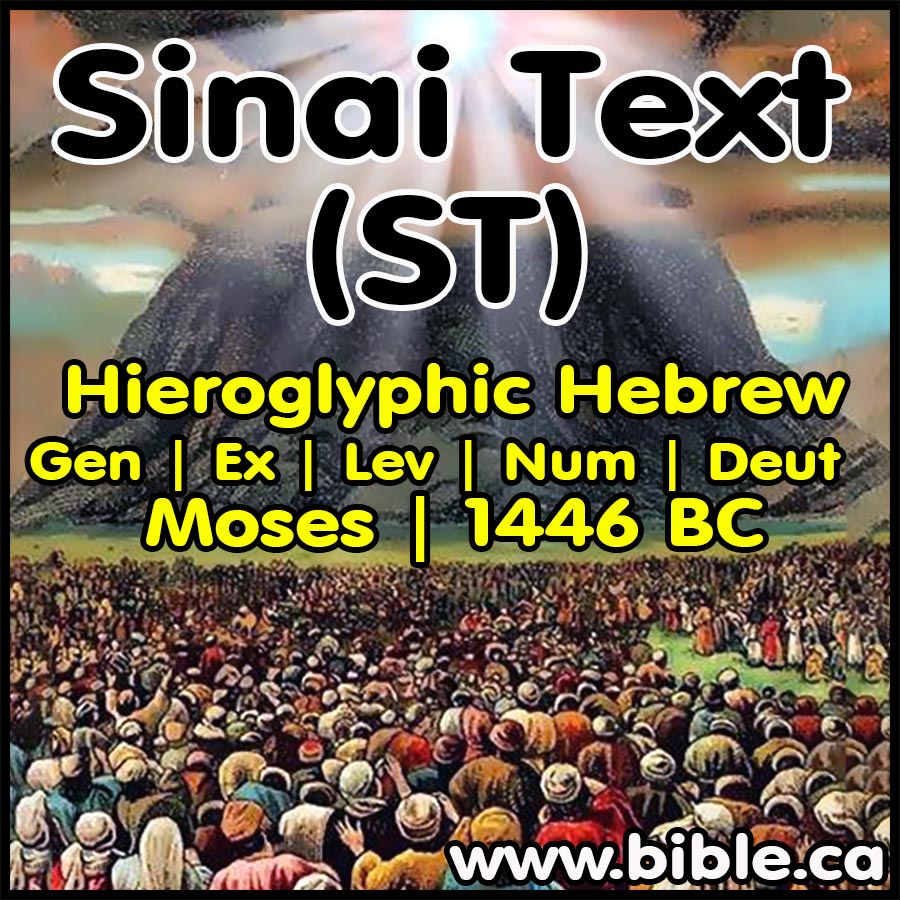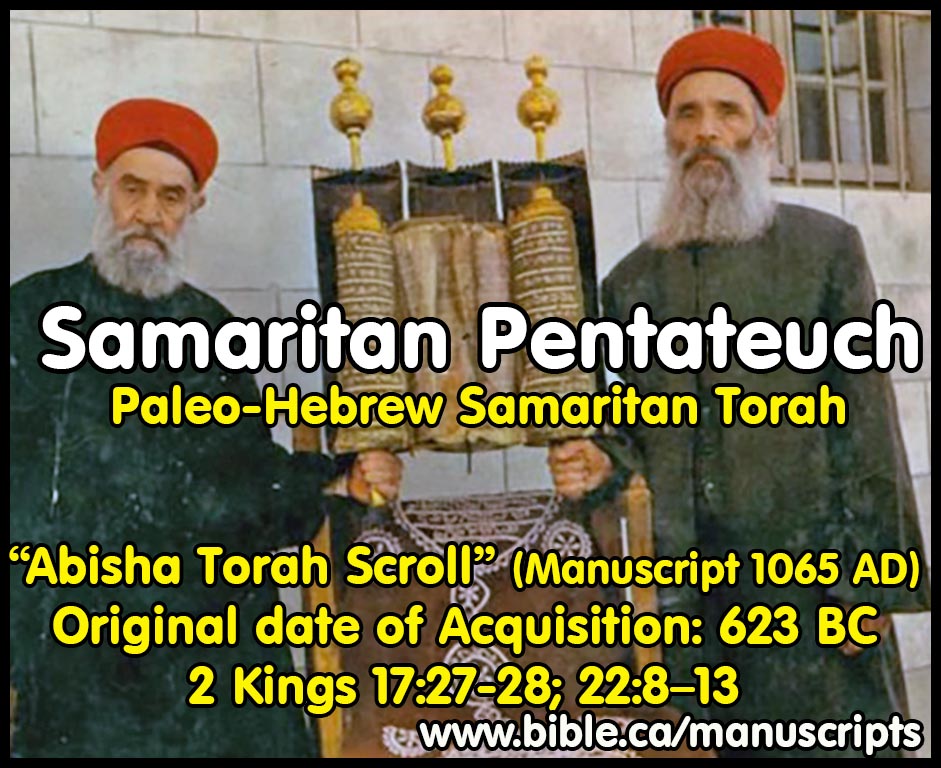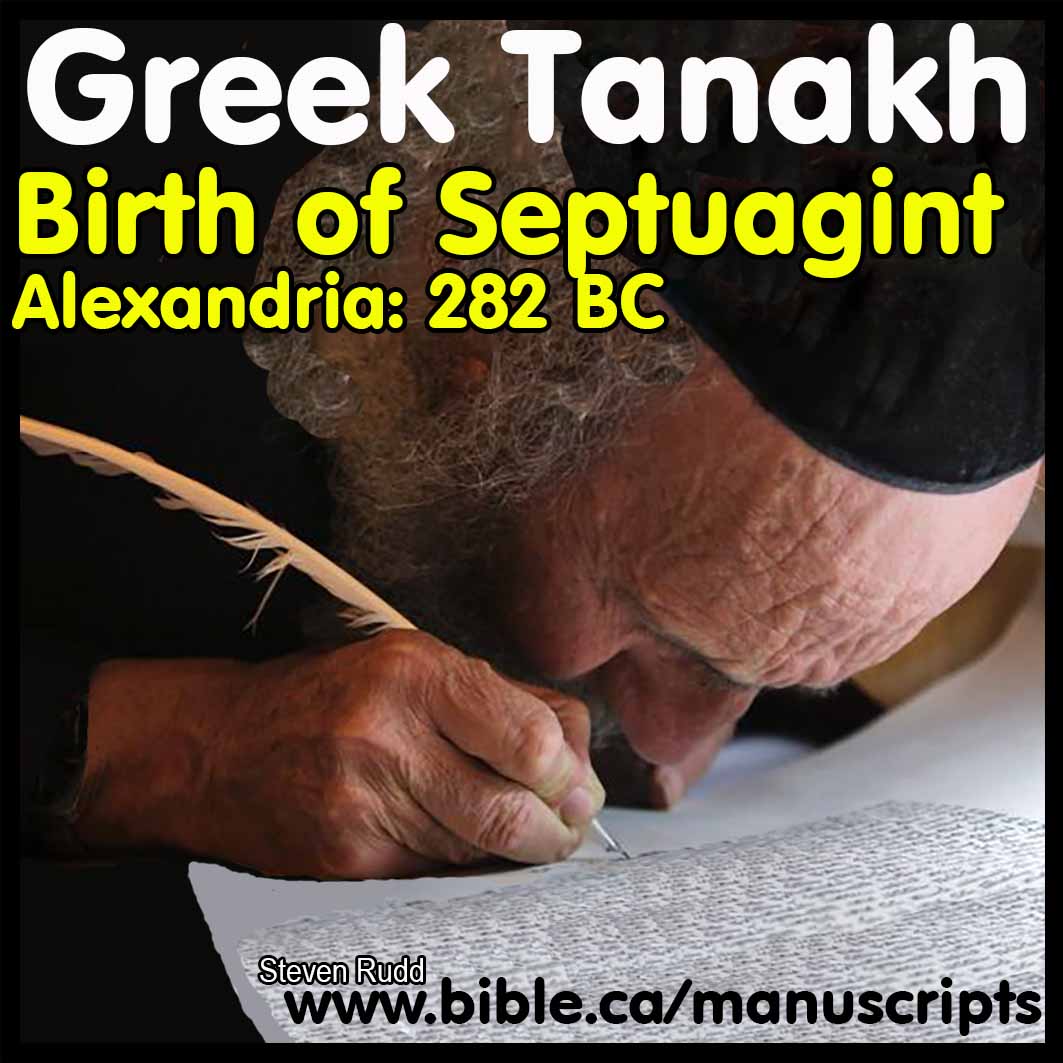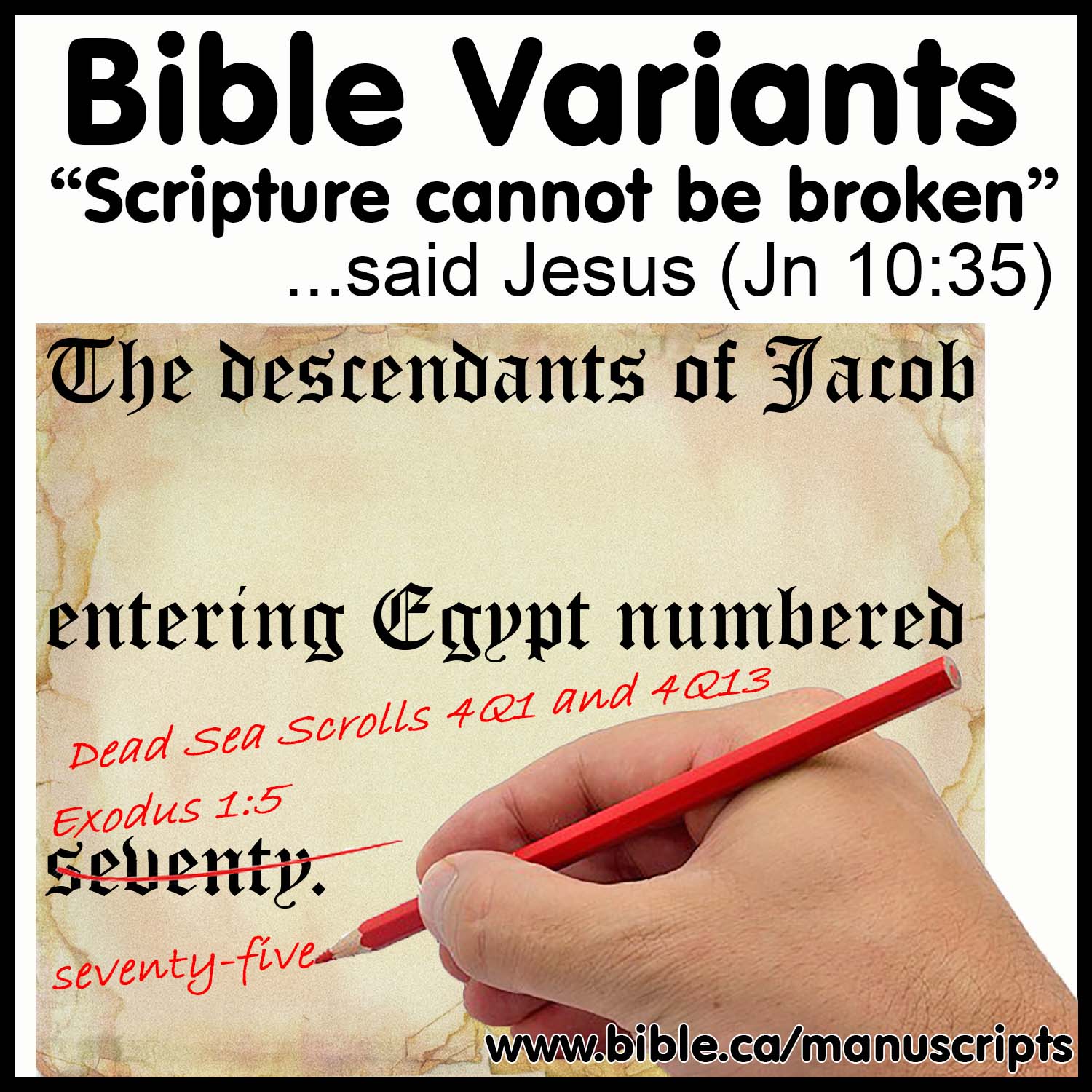Flavius Josephus Genesis Chronology
70 AD
Creation in 5467 BC
The Hebrew MT and Septuagint Chronology numbers were the same before 70 AD.
70 weeks of Daniel 9 End in 70 AD
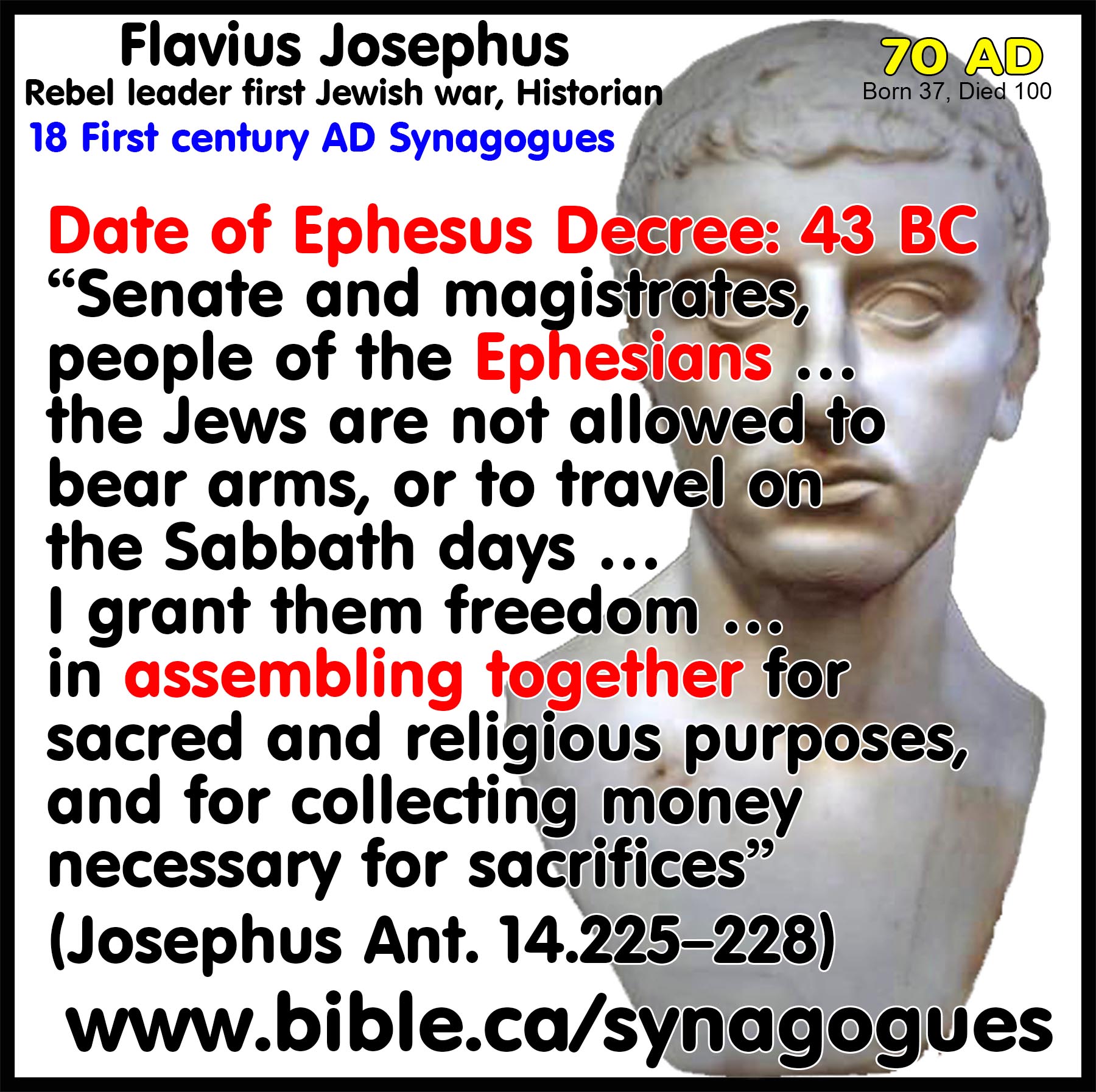
See also the Ephesian
Jewish Synagogue of 43 BC
|
|
|
|
Josephus used the Hebrew Torah to calculate an age of the earth that was almost identical to the Septuagint. In 70 AD the proto-MT and the LXX agreed in the Genesis chronologies. |
1. “I am writing down everything as I find it in our ancient books… I intended to do no more than translate the Hebrew books into the Greek language.” (Josephus, Antiquities 10:218) 2. “Those Antiquities of our Jewish nation contain the history of 5000 years, and are taken out of our sacred books; but are translated by me into the Greek tongue.” (Josephus, Against Apion 1.1) 3. The fact Josephus skipped Cainan, as does the modern Masoretic text, proves that the chronological numbers in the Hebrew and Septuagint Torah scrolls were the same. Around 150 AD at Zippori, the Jews changed the numbers in their Hebrew Torah to counter Christianity. |
|
|
|
|
Primeval Chronology of Genesis |
|||
|
|
Septuagint (LXX) Correct |
Josephus Correct |
Masoretic (MT) Corrupted 150 AD6 |
|
Date of Text |
282 BC, 350 AD |
70 AD |
1008 AD |
|
Source |
Greek Torah |
Hebrew Torah6 |
Hebrew Torah |
|
Adam |
230 |
230 |
130 |
|
Seth |
205 |
205 |
105 |
|
Enosh |
190 |
190 |
90 |
|
Kenan |
170 |
170 |
70 |
|
Mahalalel |
165 |
165 |
65 |
|
Jared |
162 |
162 |
162 |
|
Enoch |
165 |
165 |
65 |
|
Methuselah |
167/1871 |
187 |
187 |
|
Lamech |
188/1822 |
182 |
182 |
|
Noah |
500/5023 |
500/5023 Jos. blank |
500/5023 |
|
Shem |
100 |
100 Josephus leaves blank |
100 |
|
Arpachshad |
135 |
135 |
35 |
|
Cainan |
130 |
Skipped6 |
Skipped6 |
|
Shelah |
130 |
130 |
30 |
|
Eber |
134 |
134 |
34 |
|
Peleg |
130 |
130 |
30 |
|
Reu |
132 |
132 |
32 |
|
Serug |
130 |
132 |
30 |
|
Nahor |
79 |
120 |
29 |
|
Terah |
1304 |
1304 |
1304 |
|
Flood |
3298 BC |
3211 BC |
2518 BC |
|
Creation to Abraham |
3388 AC |
3301 AC |
2008 AC |
|
Abraham born |
2166 BC |
2166 BC |
2166 BC |
|
Creation |
5554 BC |
5467 BC |
4174 BC |
|
1 Methuselah’s begetting age for Lamech was 187 not 167 years: Gen 5:25. The MT have the correct reading. Only Codex Alexandrinus (450 AD) reads 167 and had a marginal correction from 167 to 187 All the following read the correct 187 years: Demetrius the chronographer (225 BC), Pseudo-Philo (60 AD), Josephus (70 AD), Seder Olam Rabbah (160 AD), Julius Africanus Sextus (221 AD), Codex Coislinianus (500 AD), and over a dozen additional miniscules. 2 Lamech’s begetting age for Noah in the LXX reads 188 but this is a scribal error and the correct age Lamech’s son Noah was born is in his 182th year in the MT and Josephus which is the autograph and correct reading. 3 Creation to birth of Shem in Noah’s 502nd year as per Gen 11:10. The LXX and MT manuscripts both have 500, which is correct and the number we use to calculate the flood date 100 years later. But for the age of the earth, we know that Shem was born in Noah’s 502nd year so we use 502, not 500. 4 All three manuscripts actually read 70 as the age of Terah when Abraham and his two brother’s were born. We know all three were not born in that year and from Acts 7:4 that Terah was actually 130 years old when Abraham was born. There is no variant, it is an interpretation variable. Even though Josephus specifically states Terah was 70, it doesn’t mean his core numbers are incorrect. Josephus, including some ancient Christians, made the wrong interpretation and used 70. The Christians have the correct understanding that 130 is correct. 5 Flood date is calculated by subtracting [the sum of Adam to Shem] from [creation date BC]. Simply use 500 for Noah and 100 for Shem, because 502 is when Shem was begotten. The flood happened when Shem was 98 years old. Both sets of numbers equal 600 years. 6 Josephus tells us twice that he was using the existing Hebrew text and not the Greek Septuagint in Antiquities 10:218 and Against Apion 1.1. This is powerful evidence that in 70 AD all Hebrew Torah scrolls in use agreed with the Greek Septuagint used in thousands of synagogues the world over. There were minor variants between the Hebrew and Greek Torah manuscripts being used in 70 AD. The fact that Joseph skipped Cainan as does the Hebrew Torah, makes it almost irrefutable that the calculated age of the earth in both languages was the higher numbers witnessed in the LXX. This dispels the widely held view that the LXX numbers are wrong. This validated all the other literary evidence that Jews changed the numbers in their Hebrew Torah scrolls in 150 AD at Zippori for anti-Christian purposes. Luke 3:36 includes “Cainan” in agreement with the LXX against the MT. |
|||
Introduction:
1. Josephus was Quad lingual Jew, able to speak Hebrew, Greek, Aramaic and Latin
2. Josephus was one of the leaders of the first Jewish War of 66-70 AD.
a. Josephus cheats mass suicide of his 40 Jewish troops at Yodfat and is captured
b. After spending two years in Jail, be becomes the personal war recorder for Titus.
c. This is how the great Jewish historian “Josephus” was born.
3. In all his writings, Josephus was using a Hebrew Torah not the Greek Septuagint as his source.
a. “But let no one blame me for writing down everything of this nature, as I find it in our ancient books; for as to that matter, I have plainly assured those that think me defective in any such point, or complain of my management, and have told them, in the beginning of this history, that I intended to do no more than translate the Hebrew books into the Greek language, and promised them to explain those facts, without adding anything to them of my own, or taking anything away from them.” (Josephus, Antiquities 10:218)
b. “I suppose that, by my books of the Antiquities of the Jews, most excellent Epaphroditus, I have made it evident to those who peruse them, that our Jewish nation is of very great antiquity, and had a distinct subsistence of its own originally; as also I have therein declared how we came to inhabit this country wherein we now live. Those Antiquities contain the history of five thousand years, and are taken out of our sacred books; but are translated by me into the Greek tongue.” (Josephus, Against Apion 1.1)
4. Josephus referenced in detail, the Genesis chronology from Creation to the year 70 AD.
a. His chronological numbers are an exact match to the LXX yet we know he was following the Hebrew Torah (proto-Masoretic text) because twice he told us so!
b. Josephus even gave a general age of the earth in the opening verse of Against Apion of 5000 years from the Hebrew Text in 70 AD that is a match for today’s LXX but divergent by over 1000 years from today’s Masoretic from which most Old Testaments in our Bible are constructed from.
c. “Those Antiquities contain the history of five thousand years, and are taken out of our sacred books; but are translated by me into the Greek tongue.” (Josephus, Against Apion 1.1)
5. The “Cainan Conundrum”:
a. Another powerful proof Josephus was using a Hebrew Torah is because he does not include Cainan in his chronology. This is exactly what the modern Masoretic Text also does. Had Josephus been using the Greek Septuagint, as so many wrongly suppose because his numbers match the LXX, he would have INCLUDED Cainan in his chronology. This is definitive.
b. As a point of interest, Cainan is found in the New Testament and the LXX Tanakh but not in the Masoretic, proving once again that the Septuagint chronology is valid.
6. All this proves that as late as of 70 AD the accepted numbers in the Hebrew text had not yet been corrupted and changed by the Jews in 160 AD at Zippori, as witnessed in the modern Masoretic text.
7. The “Dating Dilemma”: Did the flood started on 17th or 27th day?
a. There is a variance between the LXX and MT in the day the flood started.
b. The LXX says the 27th but the modern Hebrew Masoretic says the 17th
c. Josephus said it was the 27th day. “Now he says that this flood began on the 27th day of the forementioned month; and this was 2656 years from Adam” (Josephus, Antiquities 1.81-82)
d.
Once we realize that Josephus was using a Hebrew text, it becomes clear
that the number was changed at a later date by the Jews in their own Hebrew
text in 160 AD.
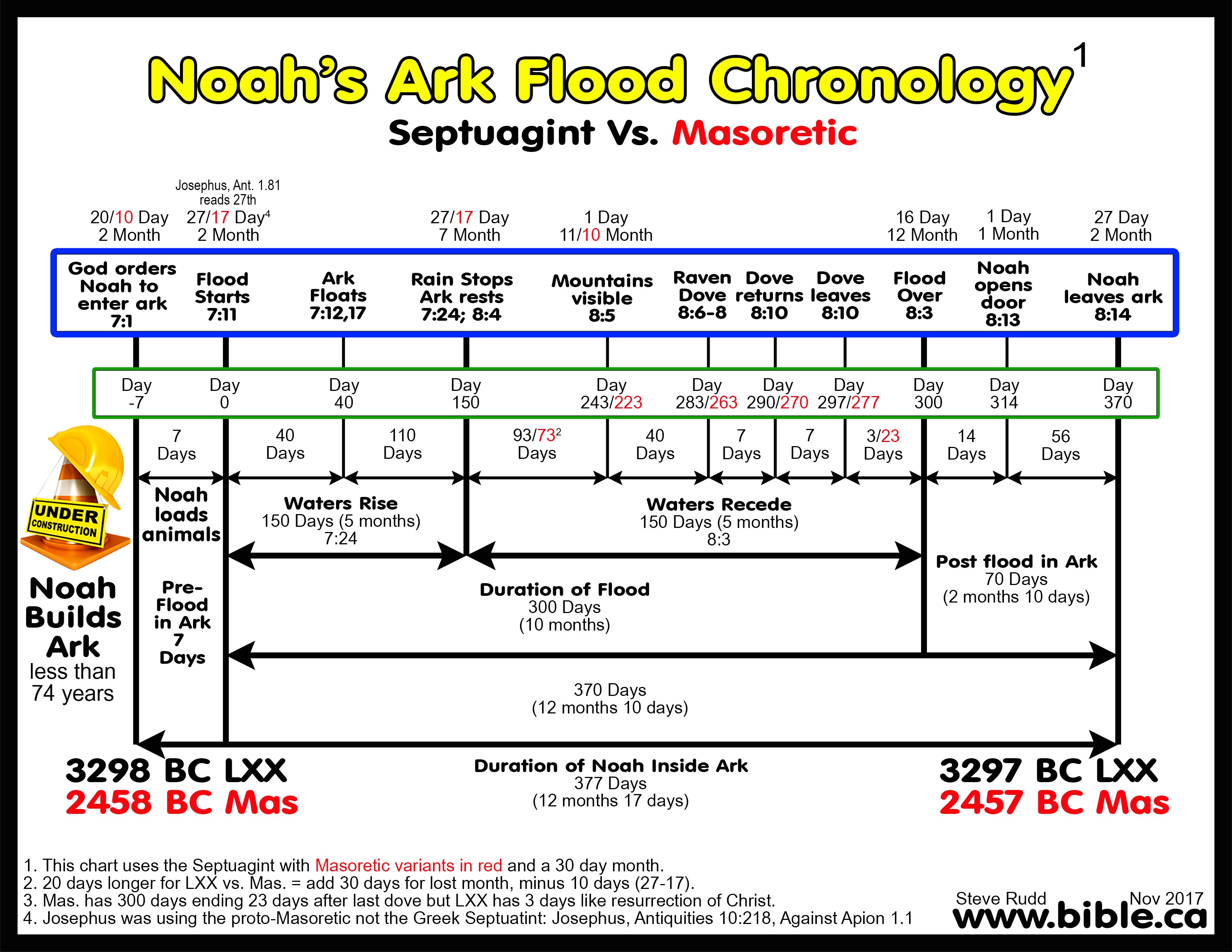
8. Daniel’s 70 Weeks:
a. Writing after 70 AD and being Jew, Josephus takes the new and unorthodox view that the 490 years of Daniel 9:24 (70 weeks) ended in 70 AD when Titus his master destroyed Jerusalem.
b. Later this will become the New orthodox view of Jews starting formally in the Seder Olam Rabbah.
c. Jews before Christianity and Christians today correctly understand that the 70 weeks of Daniel ended at the resurrection of Jesus Christ.
|
See also the |
I. The Genesis chronology of Josephus in his own words:
1. Josephus follows the LXX Chronology: " This calamity happened in the six hundredth year of Noah’s government [age], in the second month, called by the Macedonians Dius, but by the Hebrews, Marchesuan; for so did they order their year in Egypt; (81) but Moses appointed that Nisan, which is the same with Xanthicus, should be the first month for their festivals, because he brought them out of Egypt in that month; so that this month began the year as to all the solemnities they observed to the honor of God, although he preserved the original order of the months as to selling and buying, and other ordinary affairs. Now he says that this flood began on the twenty-seventh day of the forementioned month; (82) and this was two thousand six hundred and fifty-six [2656 years] years from Adam, the first man; and the time is written down in our sacred books, those who then lived having noted down, with great accuracy, both the births and deaths of illustrious men. (83) For indeed Seth was born when Adam was in his two hundred and thirtieth year [130 Masoretic], who lived nine hundred and thirty years [930: LXX & Proto-Masoretic agree]. Seth begat Enos in his two hundred and fifth year [105 Masoretic]; who, when he had lived nine hundred and twelve years [912 LXX/Masoretic agree], delivered the government to Cainan his son, whom he had in his hundred and ninetieth year [90 Masoretic]; he lived nine hundred and five years [905: LXX & Proto-Masoretic agree]. (84) Cainan, when he had lived nine hundred and ten years [910: LXX & Proto-Masoretic], had his son Malaleel, who was born in his hundred and seventieth year [70 Masoretic]. This Malaleel, having lived eight hundred and ninety-five years [895 LXX/Masoretic agree], died, leaving his son Jared, whom he begat when he was in his hundred and sixty-fifth year [65 Masoretic]. (85) He lived nine hundred and sixty-two years [905: LXX & Proto-Masoretic agree]; and then his son Enoch succeeded him, who was born when his father was one hundred and sixty-two years old [162: LXX & Proto-Masoretic agree]. Now he, when he had lived three hundred and sixty-five years [365: LXX & Proto-Masoretic agree], departed, and went to God; whence it is that they have not written down his death. (86) Now Methuselah, the son of Enoch, who was born to him when he was one hundred and sixty-five years old [65 Masoretic], had Lamech for his son when he was one hundred and eighty-seven years of age [187: LXX & Proto-Masoretic agree]; to whom he delivered the government, when he had retained it nine hundred and sixty-nine years [969: LXX & Proto-Masoretic agree]. (87) Now Lamech, when he had governed seven hundred and seventy-seven years [905: LXX & Proto-Masoretic agree], appointed Noah, his son, to be ruler of the people, who was born to Lamech when he was one hundred and eighty-two years old [Masoretic], and retained the government nine hundred and fifty years [905: LXX & Proto-Masoretic agree]. (88) These years, collected together, make up the sum before set down; but let no one inquire into the deaths of these men, for they extended their lives along together with their children and grandchildren; but let him have regard to their births only. (Josephus, Antiquities 1.82–88)
2. “I will now treat of the Hebrews. The son of Phaleg, whose father was Heber, was Ragau; whose son was Serug, to whom was born Nahor; his son was Terah, who was the father of Abraham, who accordingly was the tenth from Noah, and was born in the two hundred and ninety-second year after the Deluge; (149) for Terah begat Abram, in his seventieth year; Nahor begat Haran when he was one hundred and twenty years old; Nahor was born to Serug in his hundred and thirty-second year; Ragau had Serug at one hundred the thirty; at the same age also Phaleg had Ragau; (150) Heber begat Phaleg in his hundred and thirty-fourth year; he himself being begotten by Sala when he was an hundred and thirty years old, whom Arphaxad had for his son at the hundred and thirty-fifth year of his age. Arphaxad was the son of Shem, and born twelve years after the Deluge. (151) Now Abraham had two brethren, Nahor and Haran; of these Haran left a son, Lot; as also Sarai and Milcha his daughters, and died among the Chaldeans, in a city of the Chaldeans, called Ur; and his monument is shown to this day.” (Josephus, Antiquities 1.148-151)
3. “Now he says that this flood began on the 27th day of the forementioned month; and this was 2656 years from Adam” (Josephus, Antiquities 1.80-82)
4. “Now Adam, who was the first man, and made out of the earth (for our discourse must now be about him,) after Abel was slain, and Cain fled away on account of his murder, was solicitous for posterity, and had a vehement desire of children, he being two hundred and thirty years old; after which time he lived other seven hundred, and then died. (68) He had indeed many other children, but Seth in particular.” (Josephus, Antiquities 1.67-68)
II. Variant readings in the Manuscripts of Josephus:
1. All ancient manuscripts have variant readings.
a. There are several history complete and fragment copies of Josephus.
b. Just as with the Bible, sometimes we need to investigate which was the original autograph text.
2. Variants in Josephus Antiques 1.82
a. The Text: “Now he says that this flood began on the twenty-seventh [seventeenth] day of the forementioned month; (82) and this was 2656 years from Adam” (Josephus Antiques 1.82)
b. There are variants in the manuscripts for Josephus Antiques 1.82 that give different numbers: 2656, 2262, 1656, and 1056. 1056 is obviously wrong.
i. 1656 appears in one manuscript, and has been corrupted to match the MT.
ii. 2656 is the result of a scribal error, originally 2256.
iii. It is clear that the original figure is 2256.
c. Josephus also records the correct begetting age for Lamech as 182.
i. Some of the manuscripts have 2262, which reflects a 188 begetting age for Lamech.
ii. “It is likely that Christian scribes probably altered the number to 2262 to reflect the LXX’s figure of 188 instead of the MT’s 182.” (Henry Smith, 2017 AD)
d. Lamech’s lifespan is 707 in Josephus, which is the result of a scribal error in Greek from 777, matching the MT’s figure.
3. Variants in Josephus Antiquities 1.148:
a. The Text: “I will now treat of the Hebrews. The son of Phaleg, whose father was Heber, was Ragau; whose son was Serug, to whom was born Nahor; his son was Terah, who was the father of Abraham, who accordingly was the tenth from Noah, and was born in the 292 year after the Deluge” (Josephus Antiquities 1.148)
b. In Antiquities 1.148, many of the manuscripts have been corrupted towards the MT, and so they have 292 years.
c. However, two main manuscripts, M and O, have 992 years from the Flood to Abraham.
d. “The individual begetting ages are all longer, and so it is clear from the internal evidence that the summary figure of 292 is a deliberate corruption.” (Henry Smith, 2017 AD)
4. Variants in Josephus Antiquities 10:147-148:
a. Conservative scholars set creation at 5554 BC based upon the Septuagint. The Masoretic text calculates the age of the earth at 4174 BC and is a deliberate corrupt reduction from the autograph numbers of Moses in Genesis 5 & 11.
b. When all is considered, the conclusion is clear that Josephus’s chronology on the age of the earth followed the longer numbers co-witnessed in the Septuagint, using the Hebrew text of his day. (Josephus, Antiquities 1.5; 9.208; 10.218) We know this because his longer numbers include overarching statements like, “this history of 5000 years, and are taken out of our sacred books; but are translated by me into the Greek tongue.” (Josephus, Against Apion 1.1; Antiquities 1.13)
c. Josephus manuscripts use three different numbers: The original number used by Josephus in Ant. 10:148 is 4513, 4510 is a simple scribal error, the reduced number 3513 is either a later scribal error of 1000 years or a deliberate attempt to harmonize with the lower corrupt numbers in the Masoretic text.
d. To get the age of the earth we take Josephus’ number from Adam to the destruction of Solomon’s temple (587 BC) and add 587 and add 70 years to the time when Josephus wrote in 70 AD. We also need to add 70 years for the corrected date of Abraham leaving Haran at 130 and 215 years because Josephus took the short sojourn in Egypt when the actual number is 430 years.
i. 4513 years = 4513 + 587 + 70 + 130 = 5300 BC = Creation date very close to 5554 BC using the Septuagint
ii. 4510 years = 4510 + 587 + 70 + 130 = 5297 BC = Creation date very close to 5554 BC using the Septuagint
iii. 3513 years = 3513 + 587 + 70 + 130 = 4300 BC = Creation date very close to 4174 BC using the Masoretic
e. “Now the temple was burnt 470 years, 6 months, and 10 days, after it was built. It was then 1062 years, 6 months, and 10 days, from the departure out of Egypt; and from the Deluge to the destruction of the temple, the whole interval was 1957 years, 6 months, and 10 days; (148) but from the generation of Adam, until this befell the temple, there were 4513 [Niese1 & Marcus2 read 4513; Manuscripts R3 & O4 read 4510, Translator Whiston5 & L6 & M7 & Lat8 & Zon9 read 3513] has years, 6 months, and 10 days; so great was the number of years hereto belonging; and what actions were done during these years, we have particularly related.” (Josephus 10:147-148)
f.
FOOTNOTES:
1 | 4513 years: Works of Flavius Josephus: Critical Apparatus, F.
Josephus & Benedictus Niese, 1887 AD. And: Flavius Josephus, Flavius
Josephus: Translation and Commentary, Judean Antiquities Books 8-10, ed. Steve
Mason, Christopher T. Begg and Paul Spilsbury, p254, n. 599, 2005 AD
2 | 4513 years: Josephus, Ralph
Marcus, Vol Vi, Antiquities Books IX-XI, Translation, 1958 AD “Neither this
figure [4513] nor the variant 3513 can be reconciled with that of 3102 given in
Ant. 6:62 as the interval between Adam and the building of the temple (this in
turn varies from the chronology given in Ant 1:82), for, if we add to 3102
the sum of 470 years as the duration of the temple, we get 3572 years as the
total interval from Adam to the destruction of the temple” p239)
3 | 4510 years: R = Josephus manuscript
“Codex Regius Parisinus”, 14th century, housed in Paris
4 | 4510 years: O = Josephus manuscript
“Codex Oxoniensis (Bodleianus); miscell. graec. 186”, 14th century,
housed in Oxford Bodleian
5 | 3513 years: Josephus, William
Whiston, Translation, 1987 AD
6 | 3513 years: L = Josephus manuscript
“Codex Laurentianus”, plut. lxix. 20, 14th century, housed in
Florence
7 | 3513 years: M = Josephus manuscript
“Marcianus Codex Marcianus (Venetus) Gr. 381”, 13th century, housed
in Venice
8 | 3513 years: Lat = Josephus
manuscript “Latin version” made by order of Cassiodorus in 5th /6th
century - no details of Manuscripts given)
9 | 3513 years: Zon = Josephus
manuscript “The Chronicon of J. Zonaras”, 12th century - no details
of MSS given).
g. “In summary, a number of the internal chronological problems in Josephus may never be resolved, but the numbers which we are able to strongly establish as original in Josephus all vindicate Gen 5 and 11 of the LXX, which include: 1. Josephus’ “5000-year history” statements, which includes the general accuracy of the 4,513-year figure in Ant. 10.148, 2. the veracity of the 2262/2256-year interval from Adam to the Flood 3. the 992-year interval from the Flood to Abraham, and 4. the 1095-year (1020+75) interval from Abraham to the Temple’s construction in Ant. 8.61.” (Henry Smith, Feb 2018)
III. Josephus terminates the 70 weeks of Dan 9 in 70 AD:
A. Correct interpretation of Daniel 9:24 and the 70 Weeks:
1. The 70 weeks = 7 x 70= 490 years
2. It starts with the decree to rebuild Jerusalem in April 458 BC (Ezra 7:7-26)
3. The end of the 70th week is the resurrection of Christ in April 33 AD
4. Jesus the Messiah rose from the dead 480 solar years to the very day Artaxerxes issued his decree:
a. The decree to rebuild Jerusalem in Ezra 7:7-26 records Ezra departing Babylon for Jerusalem on 1st Nisan (first month in Jewish Calendar) in the 7th year of Artaxerxes in 458 BC which translates to 8th April 458 BC (Julian calendar) and to 3rd April 458 BC (Solar/Gregorian Calendar).
b. The resurrection of Jesus was on 16th Nisan 33 AD (Jewish Calendar) which translates to 5 April 33 AD (Julian calendar) and to 3rd April AD (Solar/Gregorian Calendar).
c. The solar calendar (Gregorian Calendar) is God’s Calendar for a year because it is the exact time it takes the earth to orbit the Sun.
d. Today we use the Gregorian Calendar which requires leap years to keep it is in sync with God’s solar calendar. The 490 years of Daniel’s 70 weeks is exactly 490 solar years to the very day.
B. Josephus believes Vespasian fulfilled Daniel’s last of 70 weeks between 63-70 AD:
1. It is important to remember that Josephus followed the longer chronology found in the Septuagint using a Hebrew text of Genesis. This proves that the extant Hebrew and Greek chronological numbers in Gen 5,11 agreed and it was not till about 150 AD that the Jews corrupted this chronology in their Hebrew text.
2. Before Josephus, Daniel’s 70 weeks were viewed as a Messianic prophecy that fueled Messianic expectation:
a. “The question arises, how did the Pharisees arrive at these dates for the coming of the Messiah, one at least of which they had already devised by the end of the first century B.C. The following explanation suggests itself. Essene expectation must have reached fever-pitch towards the end of the first century B.C., with the eschatological war already overdue, and the Messiahs of Levi and Israel expected in the last of Daniel's 70 weeks, between 10 B.C. and 2 A.D. (6) The revolts which followed Herod's death, and the rise of the Zealot movement at the same period, were no doubt encouraged by this atmosphere. The Pharisees, despite their growing hostility to the Romans, were at no time fully committed to the Zealot policy, and certainly not at this early stage; and, what is more, they were very concerned to counteract the influence of the Essenes, whose teachings were fostering the unrest. Various ways of counteracting their influence were possible. One way was to re-examine the question of chronology and, if appropriate, to produce a different scheme from that of the Essenes.” (Daniel 9 and the date of messiah's coming in Essene, Hellenistic, Pharisaic, Zealot and early Christian computation; Roger T. Beckwith, Revue de Qumrân, Vol. 10, No. 4, p 530, 1981 AD)
3. Josephus may be the first person in history to apply the end of Daniel’s 70 weeks to the destruction of Jerusalem.
a. “But now, what did most elevate them in undertaking this war, was an ambiguous oracle (Dan 9:24) that was also found in their sacred writings, how, “about that time, one from their country should become governor of the habitable earth.” (313) The Jews took this prediction to belong to themselves in particular and many of the wise men were thereby deceived in their determination. Now, this oracle certainly denoted the government of Vespasian, who was appointed emperor in Judea.” (Josephus Wars 6.312–313)
b. Josephus downplays the passage by calling it “ambiguous”. Whereas all the Jews before the birth of Christ viewed Dan 9:24 as a messianic prophecy, Josephus paved the way for all Jews after him to remove any messianic notion from Daniel’s 70 weeks.
c. Seder Olam in 160 AD redefines it even more dramatically by changing the beginning from the decree to rebuild Jerusalem, to the destruction of Solomon’s temple. All Jews today follow the absurd interpretation that directly contradicts their Hebrew Tanakh that the 70 weeks (490 years) of Daniel are the period from the destruction of Solomon’s temple to the destruction of Herod’s temple in 70 AD. Christians know the real period is 657 years (587 BC – 70 AD) not 490. The Seder Olam squashes history like a Mother Goose story and reduces, for example, the Persian empire from 205 years down to 52 years.
d. “Up to A.D. 70, the different Pharisaic dates for the coming of the Messiah, and the different reckonings of the 70 weeks which they implied, must have existed among the rabbis as three rival interpretations. After A.D. 70, however, when the Messiah had not come as expected, but the desolation also foretold in Daniel 9 (verse 26-27) had, it was natural both to tie the end of the 70 weeks to A.D. 70 and also to adopt a non-Messianic interpretation of the prophecy. This is precisely what we find in Seder Olam Rabbah. In consequence, the dates of A.M. 4000 (242 A.D.) and A.M. 4231 (473 A.D.) for the coming of the Messiah (17) became the only ones still current, but, as the 70 weeks were now tied to 70 A.D., the rival interpretations of the 70 weeks associated with these other dates were dropped, and the dates were simply retained by themselves, as unexplained traditions.” (Daniel 9 and the date of messiah's coming in Essene, Hellenistic, Pharisaic, Zealot and early Christian computation; Roger T. Beckwith, Revue de Qumrân, Vol. 10, No. 4, p 536, 1981 AD)
4. Josephus makes Vespasian the “Son of Man” of the last week of Daniel’s 70 week:
a. This is dramatic departure from the orthodox into the land of make-believe by Josephus is shocking.
e. Josephus says that Roman Caesar Vespasian (69-79 AD) was the object at the end of the 70 weeks of Daniel. No connection is made with the messiah in any way. Josephus equated the “anointed man” with Vespsian (at the hands of Titus) in 70 AD. Keep in mind that Josephus was under hire by the Romans as their “official war historian”. Making Vespasian the “anointed” of Dan 9:27 would flatter the Romans, and given no other options, chose to reinterpret the prophecy in a non-messianic way.
b. What is more shocking is that all Jews since follow his wacky interpretation that no jew had ever taken before him during the real messianic age 31 BC – 33 AD.
f. Josephus’ only other option was to accept the consensus view of the previous 300 years that the Messiah would rise from the Dead in 33 AD as the termination point of the 70th week of Daniel 9. Remember the duration from the 7th year of Artaxerxes to the Resurrection of Christ was 490 years to the very day. (April 458 BC – April 33 AD) Josephus certainly wasn’t going to allow under any circumstance for Jesus Christ to be the Messiah of Dan 9:27. How wrong he now knows he was!!!
c. “Whom, then, does JOSEPHUS take to be 'the anointed one, the prince' who came at the end of the 70 weeks, between 63 and 70 A.D.? In Wars of the Jews 6.312-213, he interprets the Son of Man who comes in the fourth world-empire and becomes ruler of the world (Dan. 7, 13) as the emperor Vespasian. The date is exactly right for 'the anointed one, the prince' to be interpreted in the same way. However, Vespasian was not 'cut off', as the 'anointed one' was, so can hardly have been viewed by JOSEPHUS as fitting this role also. (Daniel 9 and the date of messiah's coming in Essene, Hellenistic, Pharisaic, Zealot and early Christian computation; Roger T. Beckwith, Revue de Qumrân, Vol. 10, No. 4, p 535, 1981 AD)
g. Josephus, after 40 years of Christians using the long accepted timeframe of Dan 9 that ended in 33 AD to prove Jesus was the Christ, had two choices: become a Christian or become dishonest. Like the Jews before him who lied that the disciples stole the body of Jesus, Josephus is forced into the unreal world (like taking the square root of minus 1) and accepts the recently fabricated interpretation of the 70 weeks of Dan 9.
5. When Josephus entered the fantasy world where the termination of the 70 weeks had pagan Roman Caesar Vespasian (69-79 AD) as the anointed one, facts matter little, like the fact that Vespasian was never “cut off” in the middle of his 10 year reign. If only Vespasian had only reigned 7 years it might have all fit! But “lala land” spares no hostages.
Conclusion:
1. Josephus is the first person in history to define the ending of the 70 weeks of Daniel 9:24 at 70 AD.
a. The 70 weeks = 7 x 70= 490 years
b. The first week starts with the decree to rebuild Jerusalem in April 458 BC (Ezra 7:7-26)
c. The end of the 70th week is the resurrection of Christ in April 33 AD.
1. Josephus furnishes powerful evidence that before 70 AD the corruption of the Genesis 5 & 11 chronologies Hebrew Tanakh had not yet taken place.
a. Josephus tells us in two places he was using the Hebrew Bible as his primary source text for his chronological numbers in Gen 5 and 11.
b. Contrary to popular myth, Josephus WAS NOT using the Greek Septuagint. People carelessly conclude this based upon the fact that his Chronological numbers in Genesis match today’s Septuagint and differ with todays Masoretic bible. What these careless commentators failed to realize, was that Josephus was NOT using the Septuagint.
c. Using the extant Hebrew text of his day, Josephus calculated creation at 5467 BC which is almost an exact match for the Septuagint creation date of 5554 BC. It is truly stunning that the difference is only 87 years!
d. This essentially proves that the age of the earth was the same in the Proto-Masoretic source text Josephus was using as it was in the Greek Septuagint.
2. The Jews corrupted the genealogies in the Hebrew proto-Masoretic (or as we like to say, the Pre-corrupted-Masoretic text) around 160-200 AD at Zippori.
a. The corruption of the Hebrew text coincides with the writing of the first Mishnah in 200 AD.
b. By the time the Augustine got the corrupted text in 400 AD and the Masoretes in 600 AD everyone wrongly assumed it was the original and the Septuagint had been corrupted.
3. The Septuagint is the uncorrupted text and the Hebrew Masoretic is corrupted in the Genesis chronological numbers of chapters 5 and 11.
a. The textual variance in the chronological numbers of Genesis is irrelevant today because it has already served God’s original purpose of generating “messianic Expectation” at the time of Christ.
b. "So will My word be which goes forth from My mouth; It will not return to Me empty, Without accomplishing what I desire, And without succeeding in the matter for which I sent it." (Isaiah 55:11)
c. God provided multiple copies of His original word today in both the original language of Hebrew and the translated Greek.
d. So when the Jews corrupted the text of Genesis for anti-Christian purposes, it was 150 years too late because God designed the text to create expectation for the coming of the Messiah between 31 BC and 33 AD and it “accomplished what God desires” (Isaiah 55:11)
4. Jesus said “Scripture cannot be broken!” John 10:35
|
See also the |
|
The Septuagint LXX “Scripture Cannot Be Broken” |
|||||
|
Start Here: Master Introduction and Index |
|||||
|
Six Bible Manuscripts |
|||||
|
1446 BC Sinai Text (ST) |
1050 BC Samuel’s Text (SNT) |
623 BC Samaritan (SP) |
458 BC Ezra’s Text (XIV) |
282 BC Septuagint (LXX) |
160 AD Masoretic (MT) |
|
Research Tools |
|||||
|
Steve Rudd, November 2017 AD: Contact the author for comments, input or corrections |
|||||
By Steve Rudd: November 2017: Contact the author for comments, input or corrections.
Go to: Main Bible Manuscripts Page

